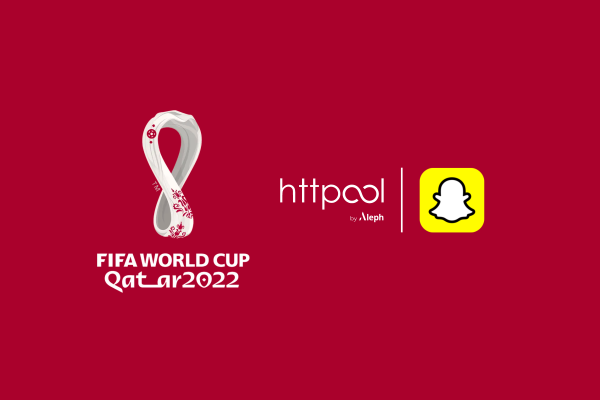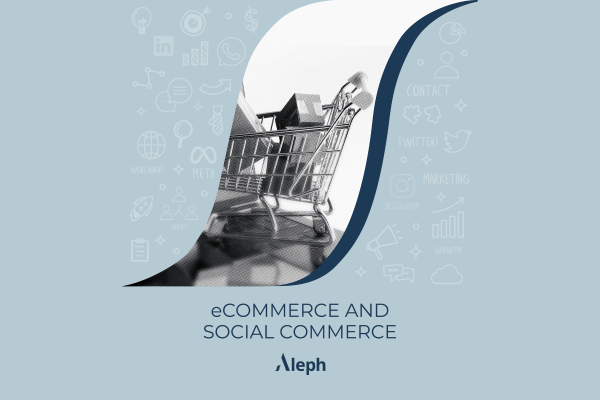
Forget about keeping up with the Jones, for marketers it is crucial to keep up to date with potential consumers, and trends in their communities. For Kerttu Talvik, Country Manager for Httpool Estonia, this means tactfully targeting the attention of Generation Z, as this generation is now approaching early adulthood and will therefore form a significant percentage of potential consumers.
Targeting Gen-Z audiences early ensures that your brand is already on the tip of their tongue when investigating purchases.
“The older representatives of Gen-Z are now starting their careers, which is why their purchasing power will soon increase. Companies that do not adapt their marketing strategy to incorporate this audience, may lose an important customer segment” comments Kerttu Talvik.
She further remarks that when marketing to Gen-Z audiences, certain particulars must be kept in mind in order to succeed. This report is specifically geared around the discussion of Gen-Z marketing and the importance of this audience on modern day trade.
Gen-Z, the generation born between 1996 and 2010, is the first to have grown up immersed in technology, and as a result, they are impressively tech-savvy, connected, and knowledgeable. As this generation begins to enter the workforce, their purchase power steadily increases, and therefore so must the understanding of their marketing needs.
A survey conducted by Google found that 70% of Gen-Z relate to YouTube influencers more than other celebrities. “The time of mass marketing is over, successful brands must now engage in transparent, and targeted communication. One effective way is to use influential people” comments Kerttu. She believes the key to success in this area is finding the right people for the job, who can relate best to the target audience, and who really speaks their language.
“Gen-Z audiences have grown up in an individualistic world and thus expect a personal approach from brands. Sales messages must therefore be adapted accordingly. There is nothing worse than a one-size-fits-all mentality in marketing” explained Talvik.
Shopping Behaviours: Millennials Vs Generation-Z
Having already been immersed in the digital world and had time to experience the ins and outs of technology, Gen-Z are even more concerned than millennials about having a pleasant online buying experience. The mobile-first approach is shared by both generations, and while millennials conduct the majority of their internet purchasing on their mobile devices, a member of Gen-Z is twice as likely as a millennial to make a mobile purchase. Furthermore, when compared to millennials, Gen-Z is more likely to abandon a purchasing decision owing to a bad online experience (22 percent to 15 percent).
So, what’s the takeaway? It is vital to provide both Gen-Z and millennials with positive internet experiences, and take into consideration their personal preferences when planning marketing strategies, as although Millennials favour internet reviews, Gen-Z prefer influencers. In fact, 80% of millennials read online reviews before making purchases. Millennials are also influenced by word-of-mouth and recommendations from their peers; as high as 82 percent of Millenials believe that word-of-mouth recommendations play a major role in their purchasing decisions. Whereas, Gen-Z are more prone to influence from social and nano influencers. In fact, compared to 26% of the general population, 44 percent of Gen-Z had made a purchase based on an influencer’s suggestion. Therefore two things are already crystal clear, when targeting Gen-Z, your success could be measured in your investment in influencers. Whereas for Millennials focus heavily on reviews and referrals.
As we all know brand loyalty can play a significant impact on a company’s performance and when it comes to this, both Gen-Z and Millennials have distinct priorities Although loyal customers may only make up 15% of a company’s total customer base, they might account for up to 70% of all income. Thus, as evidence has shown that Gen-Z audiences are in fact classified as the most loyal generation, recognizing the differences between audience needs is crucial to mastering the art of selling to Gen-Z.
How to Increase Engagement?
1. Create Relevant Content
The most common mistake we have seen marketers make is to treat social media platforms as distinct routes of distribution, rather than the various cultures that they are. Each platform has its own set of rules and traditions, and adhering to them is critical to the success of your paid or organic campaign.
This leads us to the first lesson: always create creative materials tailored to the platforms you’re using. It is common to see content trimmed down and re-edited for television or other social media platforms and it is natural to assume that material performing well in one channel, will also perform well in others. However, as Kerttu argued, a one size fits all belief is not always the case. Tailoring your content to the platform you’re using is essential, regardless of which generation you’re targeting.
According to Twitter, 51% of daily users fall within the 16 to 24 category, with Gen-Z the most likely group to use the platform for keeping up to date with the news and trends, and followed closely by users searching for entertaining content. Therefore, if your brand considers Twitter as a part of their channel mix, make sure to provide frequent content to stay in line with what the users expect.
Furthermore, while the age group is still a relatively small one for the whole platform, 52% of tweets in 2020 came from Gen-Z users. So, it would seem that pleasing the audience with the loudest voices, would result in increased brand appeal.
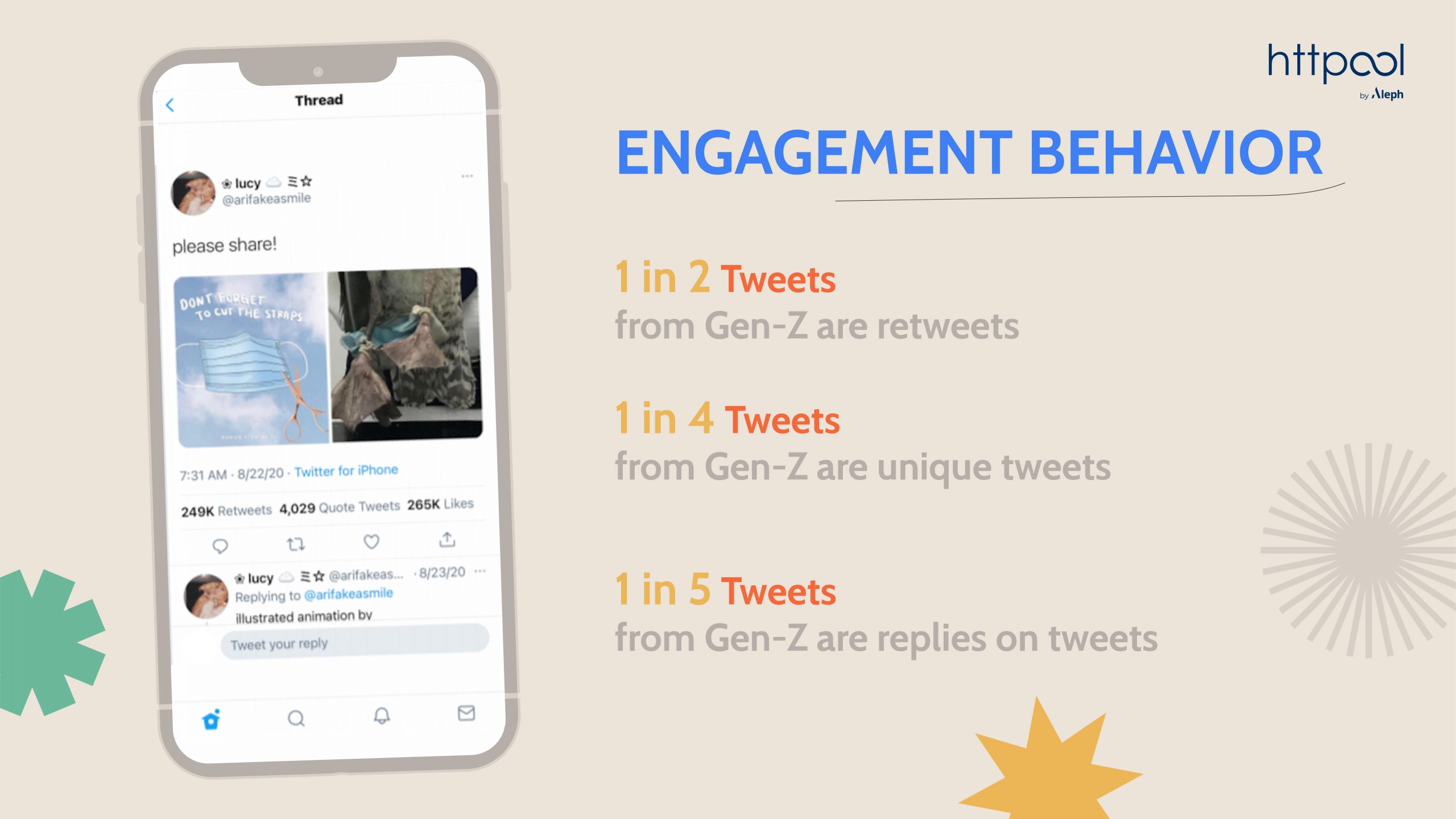
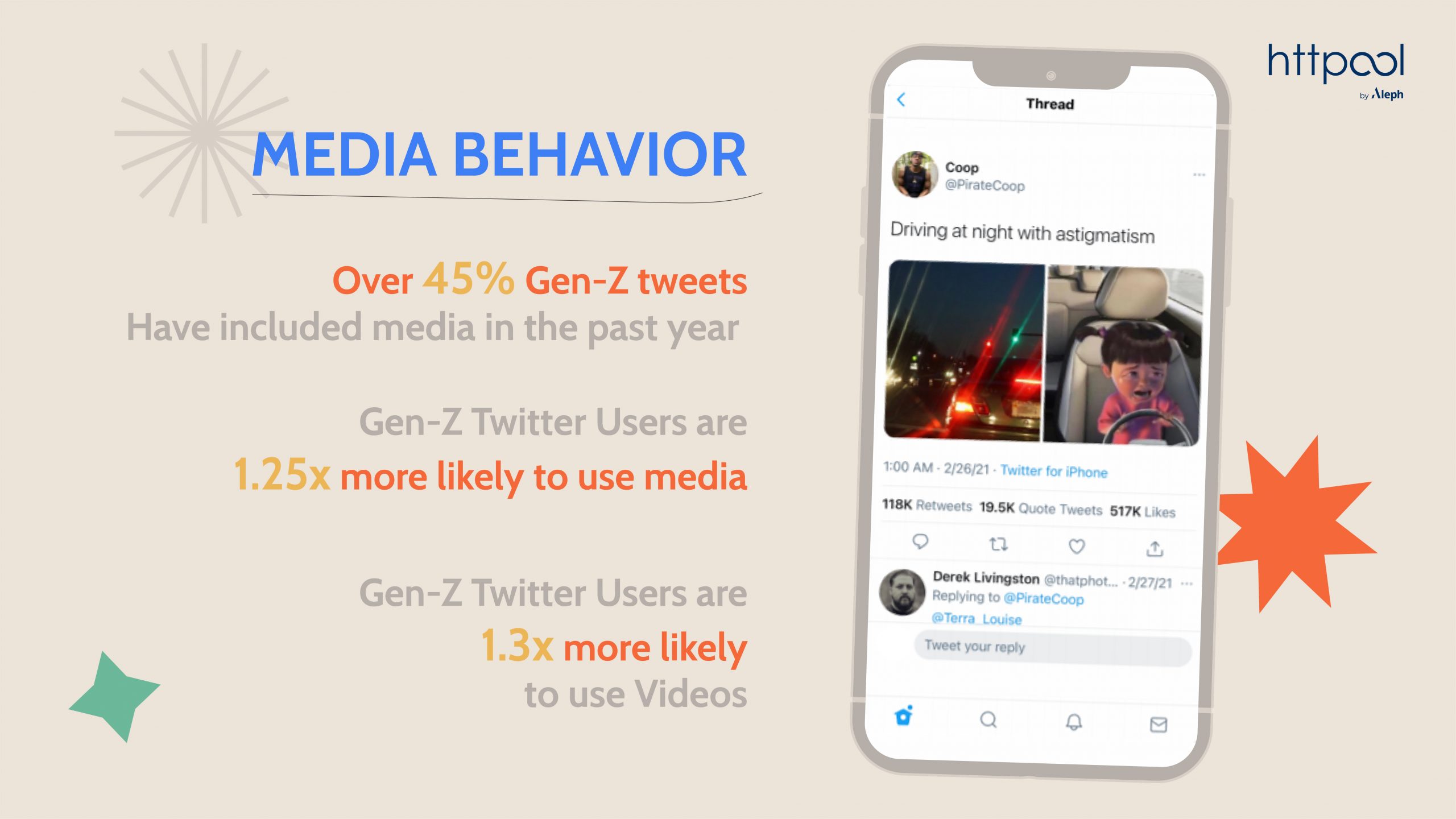
Keep in mind that most of the content coming from Gen-Z users are retweets and video (or media in general), so adapt the brand’s content accordingly.
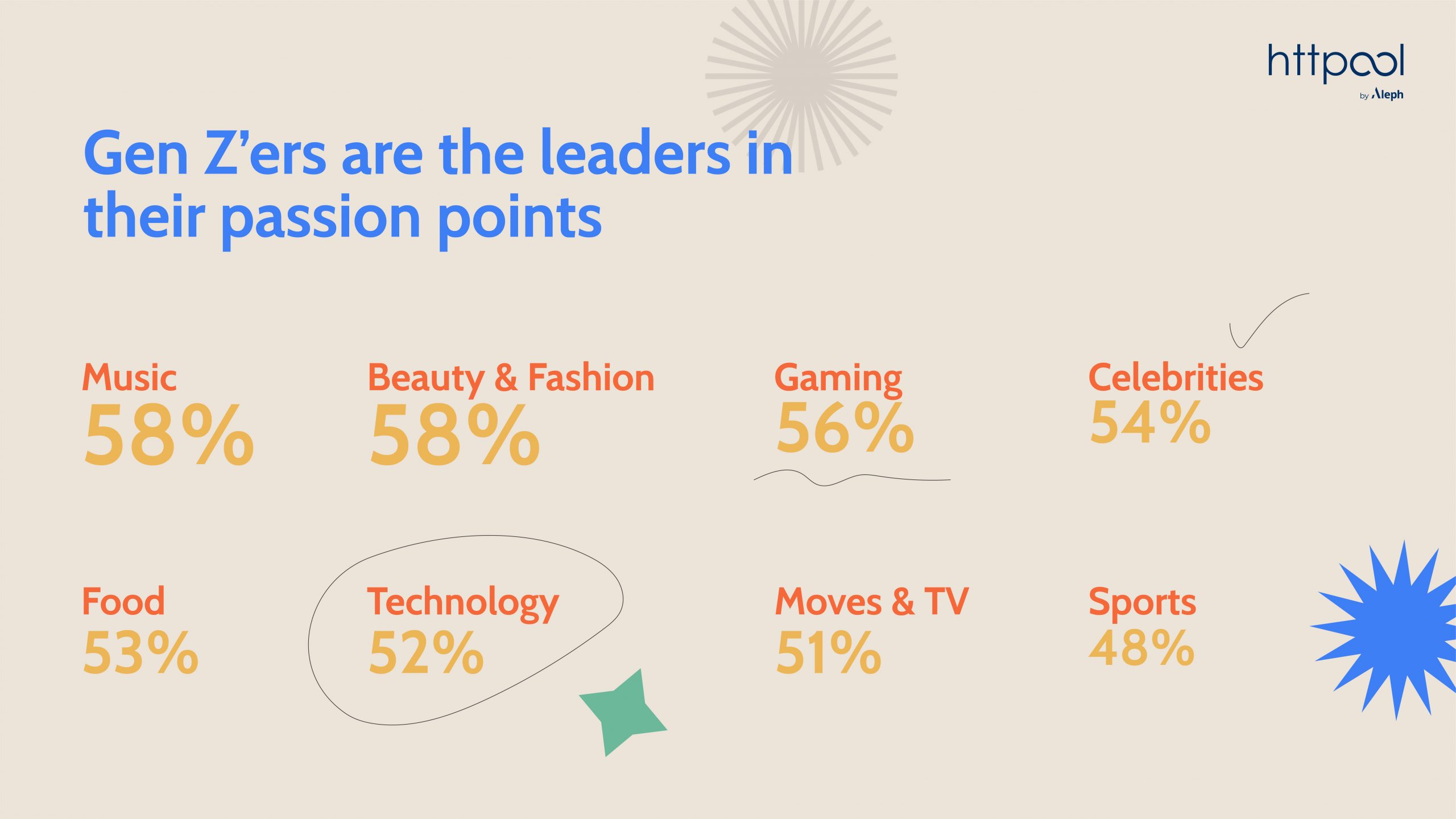
When it comes to topics, music is on the top of the conversation list for Gen-Z users. Aligning your brand’s voice and partnerships with topics that encourage conversations can go a long way, creating a viral effect for both organic and paid efforts.

What is the bottom line? Understand the desires of your audience, be genuine, follow social movements, and ensure you are fast on your feet in terms of news and content, all of which will encourage brand appeal for the Gen-Z audiences.
2. Make Authenticity a Top Priority
Authenticity is essential for social media success. It provides a glimpse of humanity in an increasingly commercialised environment. According to Marketing Dive, this is especially true when targeting Gen-Z, a group that prefers authentic companies.
Embrace the demand for authenticity rather than opposing it. Show the audience who you are as a company, the individuals behind the logo, and what your values are. We typically hear about building a brand’s ‘voice’, but we advocate the creation and advertisement of your brands ‘personality’. Concentrate on developing long-term partnerships and promoting loyalty. Consider uploading behind-the-scenes videos, employee interviews, or a peek inside when things go wrong. This will help to build a human connection with your customers on Gen-Z-driven platforms such as TikTok and Snapchat. Remember that expensive equipment and pre planned videos have no place on platforms like TikTok. Genuinity trumps every time.
3. Prioritise Influencer Marketing and Creativity
Many marketing executives have a love-hate relationship with influencers, but according to Morning Consult, 16% of Gen-Z men and 24% of Gen-Z women rely on influencers for purchase recommendations, and we believe they are a must-have within your marketing budget.
However, many influencer marketing strategies completely overlook the value. Influencer marketing should be viewed as a whole strategy rather than just a distribution channel. It’s a waste of money to pay for a post just to use it as paid media. Influencers provide you with borrowed trust and respect, thus using this opportunity to simply have a script read or displaying particular images is beneficial to nobody. The planning and preparation of influencer campaigns is also essential to the formula for success.
Rather, concentrate on blending your brand with theirs. Ask yourself how to dynamically promote your brand in a particular community, and which style of influencer or message would best fit your brand narrative. In doing so, you have the opportunity to open the door to a world of new connections. It is important not to forget the power and value of free publicity too, opportunities will flourish for those that can initiate a trend, challenge, or hashtag.
4. Pay Attention to Behavioural Patterns
We are currently witnessing a significant shift in behaviour amongst Gen-Z users. Social media has always been a factor of their lives and because of this they no longer view it as ‘media’ at all. For Gen-Z platforms such as instagram are now a way to connect, learn, debate, express themselves, and even date. Therefore the chosen content displayed and the direction of the brand narrative is more important than ever, as users are often forming connections and building followings based on shared morals or beliefs. In Europe, 56% of Gen-Z users expect brands to make their stance on social and political issues known publicly.
Newer formats such as Instagram Stories, Reels, and Live offer users the opportunity to express themselves, and view content in engaging ways. Gen-Z users are often more likely to accept and relish new features when compared with other generations. Whilst they are knowledgeable about technology, they often still prefer to look for inspiration from other creators before posting themselves. Stories is one of the most widely consumed formats for this, with reports demonstrating that 72% of Gen-Z in Europe use Instagram to view other people’s Stories; while only 36% use it to create them.
Creativity for advertisers should be on top of the list when targeting Gen-Z audiences. Think carefully about how to hold their gaze, as the abundance of information available to them on a daily basis continues to increase, in turn their attention span decreases. An average Millennial user spends 2h38min on Social Media, whilst Gen-Z spend 20 minutes more per day on social media. They are more engaged and thus demand more content, but that content needs to be different, weird, and relevant to their world views. To capture their attention, think outside of the common norms and develop your unique voice as a brand. If you don’t express yourself, someone else will, and they may beat you in the battle for Gen-Z attention.
Often a key method of attraction is to remove restrictions while shopping online. All users, but especially Gen-Z appreciate a streamlined shopping experience, from initial contact with the advertisement, to the product itself, and purchase process. Stand out from the crowd and give them reason to come back.
5. Make User-Generated Content a Priority
Paid and organic social media marketing are clearly distinguished by businesses of all sizes. Many are managed by independent teams that don’t communicate with one another. The trick is to think of media buys and organic content as two sides of the same coin.
Today’s social media users become skilled at tuning out when losing interest in a marketing message, brand voice, or stance. However, they continue to place a high value on authentic content provided by their peers. In fact, 86% of millennials believe that user-generated content is a solid indicator of a company’s quality.
TikTok for GenZ: The Stats & Why This Matters
On average Gen-Z users spend 14% more time per day on TikTok compared to other generations, but often spread across multiple shorter sessions throughout the day. They will subscribe to content they love rather than just watch the ‘For You’ feed. Moreover, 46% of TikTok users are between 16 and 24 years old, which makes the platform a fantastic targeting tool for Gen-Z. In fact, studies have shown that 1 in 5 Gen-Z users on TikTok have started following a new brand within the past month alone.
We can not emphasise the need for inspiring and innovative content enough, using your marketing to open doors of discovery for your audience will likely in turn grab the attention of Gen-Z users. Statistics demonstrate that a whopping 80% of TikTok users state that they find the platform inspiring, 75% believe it allows them to discover new things, and 65% of users argue that the platform is trendsetting.
Gen-Z TikTok users who discover something they enjoy don’t hit ‘like’ and move on – they search for more of the same, and take action. Take the recent trend #TikTokMadeMeBuyIt where users posted videos about the products they discovered via the platform. To discover more great content from both the TikTok editorial team and brands, Gen-Z users frequently visit the Discovery Page. In fact, Gen-Z users are 26% more likely to browse through this page, or directly search, compared to other generations. Brand Solutions such as the branded hashtag challenge take advantage of this, placing sponsored banners in between editorial content on the Discovery Page.
TikTok users love to strike up conversation in the comments section. On average, Gen-Z users leave around one comment per day, 21% more than other generations, and with features including video comment replies, and the newly-added Q&A section, both users and creators can strike up dialogues that can inspire entirely new TikTok videos. It’s also quite shocking just how much Gen-Z users share content – both on and off the platform. In fact, they share videos almost as often as they comment on them, magnifying TikTok’s reach well beyond the walls of the platform community. Of course it doesn’t just stop at original produced content, oh no, but also in-Feed Ads to let users comment on advertisements, or even download them. What a great way to spark engagement and further increase reach!
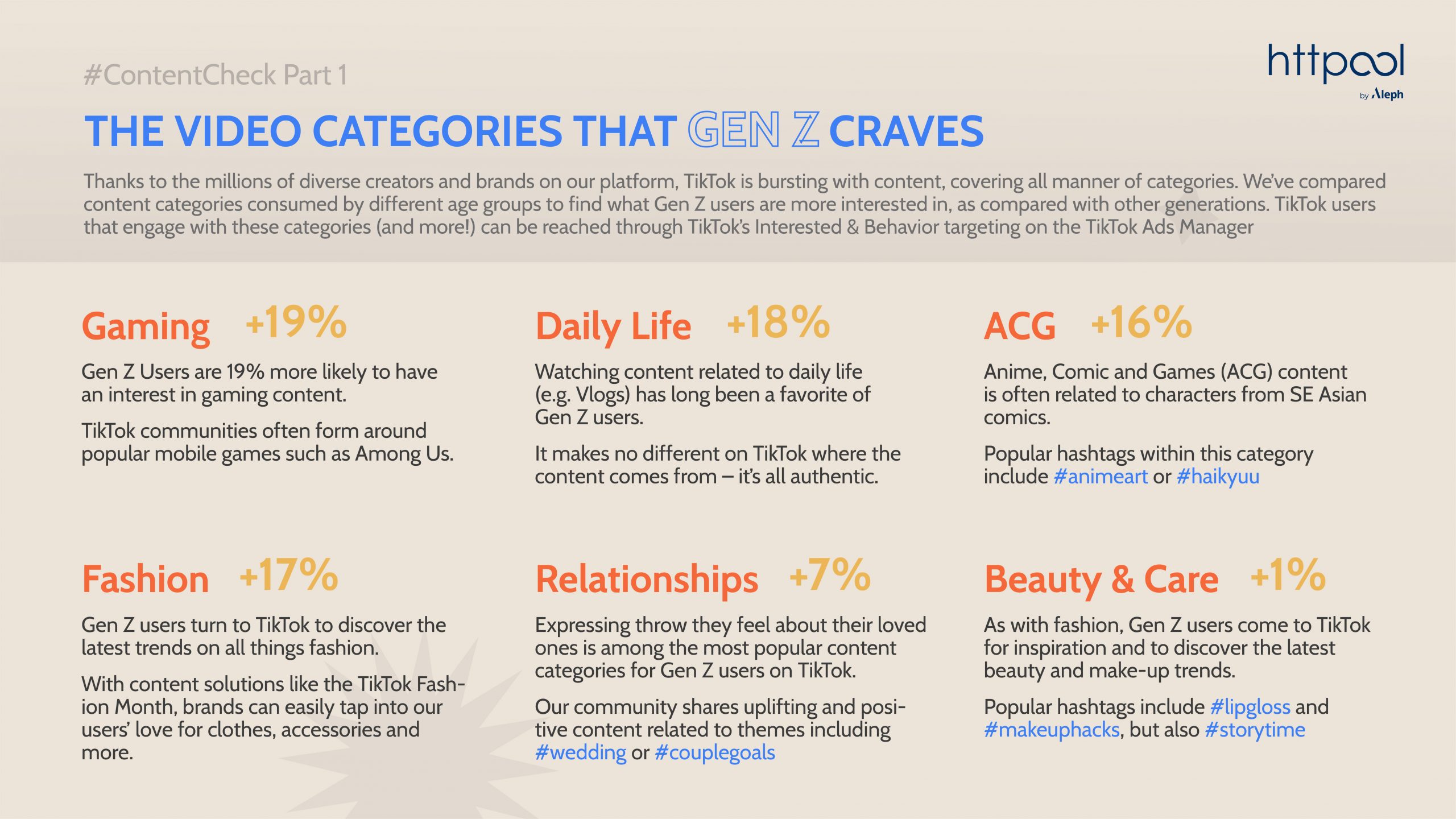
Furthermore, it is extremely important that the ads themselves are made to look like organic content, as 82% of the Gen-Z audiences are known to skip the classic sales ads. As already mentioned, the ads should be short and concise, with the brand or product highlighted from the very beginning, ensuring that you don’t miss out on those short attention spans, with approximately 8 seconds for Gen Z and 12 seconds for Millennials. If you fail to present the whole story and grab viewer attention during this time, you lose them.
Conclusion
So, what have we learnt? Well, instead of aggressively marketing to Gen-Z audiences and flooding them with content, it is instead crucial to carefully plan the choice of campaign, assuring the empathy and integrity of your message. Consider how you can create a likeable, relatable, and shareable brand personality. Often thinking of your brand as a person is the perfect way to attract Gen-audiences, is this a person that your audience wants to be around, and follow? Use these methods to discover the perfect formula to suit your brand, and in turn grab the hearts and minds of your Gen-Z audience. Ensure you are focusing on more than just the trends, by looking at the specific shopping behaviours that Millenials inhabit, using this information to see what we can do to increase engagement on all platforms when it comes to the iconic Gen-Z.
Take a look at the types of aesthetics and the range of influencers that appeals to your target audience – are they the same? For example, would a beauty influencer have as much impact on viewers, compared with influences that discuss socio-economic issues, when a new cruelty free product is launched? Do the research and find the answer. Focus on how advertisers relay their messages to viewers, take the time needed to tailor content to the specific audience, and don’t forget to show your human element – originality and authenticity sells! As you now know, there’s always someone watching, so why not make it worth their while?






